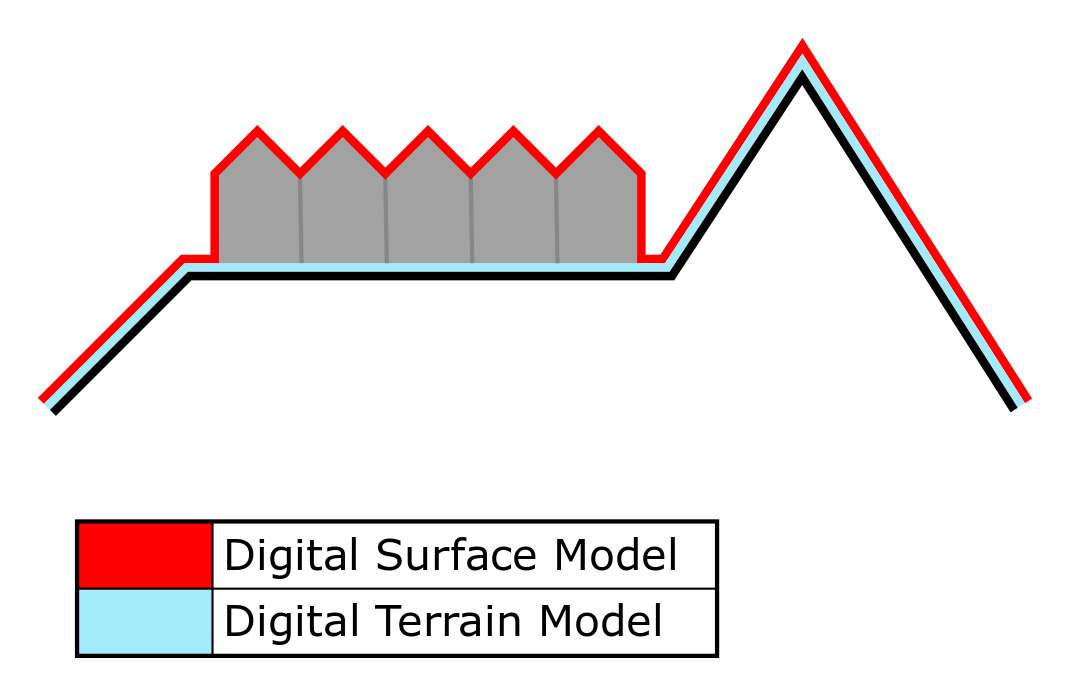Elevation model: Difference between revisions
mNo edit summary |
No edit summary |
||
| Line 4: | Line 4: | ||
{{being updated}} | {{being updated}} | ||
==What is an elevation model== | ==What is an elevation model== | ||
[[File:DTM_DSM.png|thumb|200px|left|Source: https://commons.wikimedia.org/wiki/File:DTM_DSM.svg]] | |||
An elevation model, also known as a Digital Surface Model (DSM) or Digital Terrain Model (DTM) as appropriate, is a model representation of terrain heights; the quantitative measurement of vertical elevation change in a landscape. on a small scale, differences in terrain height can affect shade and water distribution. On a larger scale, terrain height has an effect on weather and climate patterns.{{clear}} | |||
==How is the elevation model implemented in the {{software}}== | ==How is the elevation model implemented in the {{software}}== | ||
In the {{software}}, the elevation model offers terrein heights representation as both a DTM and as a DSM. Specifically, it is a 2-dimensional grid with values indicating the terrain height in meters relative to {{datum}}. Terrain in this context meaning the soil and everything below it. Features such as [[Construction]]s are explicitly not a part of the DTM, but are a part of the DSM. In locations with [[Water (Terrain Attribute)|water]], the elevation model follows the bottom of the water body for both the DTM and the DSM. | |||
==Default elevation model== | ==Default elevation model== | ||
| Line 20: | Line 23: | ||
==See also== | ==See also== | ||
* Elevation Model (Water Overlay) | * [[Terrain]] | ||
* [[Elevation Model (Water Overlay)]] | |||
Revision as of 14:59, 17 June 2020
Redirect to:
What is an elevation model
An elevation model, also known as a Digital Surface Model (DSM) or Digital Terrain Model (DTM) as appropriate, is a model representation of terrain heights; the quantitative measurement of vertical elevation change in a landscape. on a small scale, differences in terrain height can affect shade and water distribution. On a larger scale, terrain height has an effect on weather and climate patterns.
How is the elevation model implemented in the Tygron Platform
In the Tygron Platform, the elevation model offers terrein heights representation as both a DTM and as a DSM. Specifically, it is a 2-dimensional grid with values indicating the terrain height in meters relative to datum. Terrain in this context meaning the soil and everything below it. Features such as Constructions are explicitly not a part of the DTM, but are a part of the DSM. In locations with water, the elevation model follows the bottom of the water body for both the DTM and the DSM.
Default elevation model
Constructions
Waterways
How-to's
- How to change how the default elevation model is generated
- How to import a GeoTIFF as elevation model
- How to import a GeoJSON to change the elevation model
- How to import waterways

